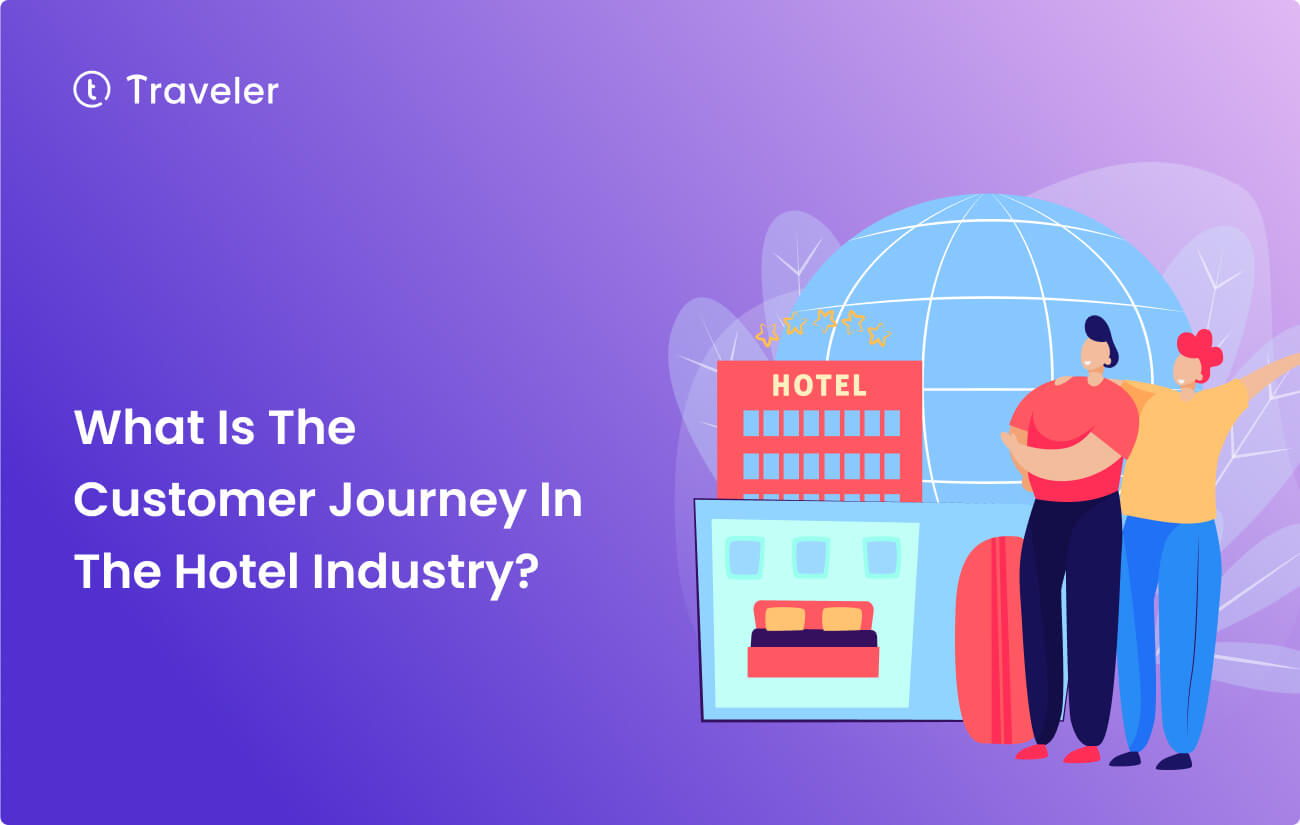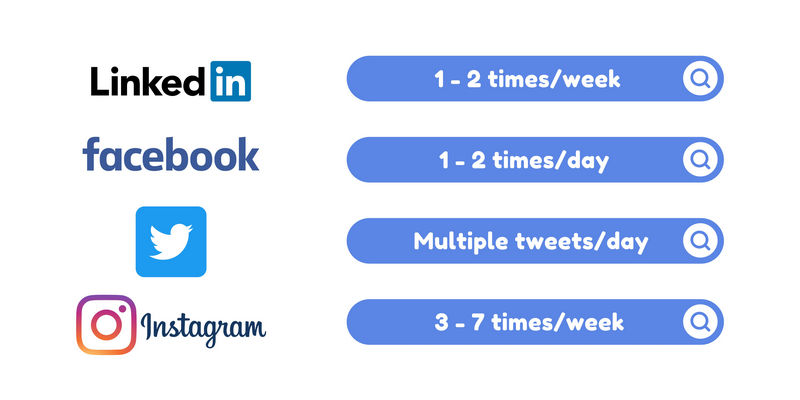
Table of Contents
In the dynamic landscape of the hotel industry, understanding the customer journey is not just essential—it’s indispensable. The customer journey encompasses every interaction a guest has with your hotel, from the initial discovery and booking process to the post-stay feedback.
This journey holds valuable insights that can help enhance guest satisfaction and elevate the overall hotel experience. In this blog post, “What is the customer journey in the hotel industry?”, we will delve into the intricacies of the customer journey, its importance, and how it can be leveraged to create memorable experiences that keep guests coming back.

What is a Customer Journey?
The customer journey can be described as a comprehensive narrative that captures the entire process a guest undergoes, from their initial inspiration to book a stay, to their post-stay interactions with a hotel. It’s a holistic view of a guest’s experience, and it provides invaluable insight into how guests interact with your hotel at every touchpoint.

The journey starts with the initial inspiration, where a potential guest first discovers your hotel. This could be through word-of-mouth, an online search, or even an ad. The next step involves research and comparison, as the potential guest explores your offerings, compares them with other hotels, and reads reviews.
Understanding this journey is crucial as it helps you identify opportunities to enhance the guest experience at each touchpoint, thereby fostering loyalty and boosting your hotel’s reputation in the long run.
Stages of a Hotel Customer Journey
1. Inspiration: The first stage of the hotel customer journey is the inspiration phase. This is where potential guests start dreaming about their next getaway, fueled by a desire to explore new places and experience different cultures. At this stage, they are gathering ideas about where to go and where to stay.

This initial stage is driven by various factors that can include anything from a captivating travel blog post or a friend’s recent vacation photos, to a desire for relaxation or adventure. As hoteliers, understanding these factors can help you position your property in a way that aligns with these motivations, thereby capturing the attention of potential guests.
Example: Consider a traveler who stumbles upon stunning photos of your hotel’s beachfront location on social media. The allure of the crystal-clear waters, the sandy beaches, and the promise of a serene retreat could spark their interest and inspire them to consider your hotel as a potential destination for their next vacation. This is the power of the inspiration stage—it’s where the journey begins, and it sets the tone for the stages to follow.

2. Research and Booking: The second stage of the hotel customer journey involves research and booking. At this point, the potential guest has some ideas about their destination and is now diving deeper to find the perfect place to stay.
This stage involves meticulous research and comparison of various options. Guests look at different hotels, compare prices, amenities, location, and more importantly, read reviews from past guests. They may visit various hotel booking websites, travel blogs, and social media platforms to gather as much information as they can. After a thorough evaluation, they make a decision and proceed to book a room at their chosen hotel.

Example: A traveler, inspired by the beachfront photos, might start visiting different travel websites to learn more about your hotel and others in the same location. They would compare prices, check availability, read guest reviews, and examine the services and amenities each hotel offers.
After weighing all these factors, they finally decide that your hotel offers the best value and experience for their needs, and they proceed to make a booking. This stage is critical because it’s where the first significant interaction between the guest and your hotel takes place—the booking.
3. Check-in: The third stage of the hotel customer journey is the check-in process. This critical phase sets the tone for the guest’s stay at the hotel and is their first in-person interaction with your staff.
The check-in process begins when the guest arrives at the hotel. This can include interactions at the reception, room assignment, and the initial introduction to the hotel’s facilities. It’s a significant opportunity to make a good first impression, provide essential information about the hotel and its services, and ensure the guest feels welcomed and comfortable.

Examples: Imagine a guest arriving at your hotel after a long journey. They are warmly greeted by the front desk staff who efficiently handle their check-in process, making it quick and hassle-free. The staff provides them with all the necessary information about their room, dining options, and other amenities. They also offer assistance with their luggage and guide them to their room. This positive experience during the check-in stage can significantly enhance the guest’s perception of your hotel and set the stage for a satisfying stay.
4. Guest Experience: The fourth stage of the hotel customer journey is arguably the most important one – the guest experience. This is when the guest stays at the hotel and experiences everything it has to offer.
The guest experience stage encompasses all the interactions a guest has during their stay at your hotel. This includes their use of amenities such as the spa, gym, pool, or restaurant, their interactions with your staff, and their overall comfort and satisfaction with their room and services provided. It’s during this stage that the guest truly gets to know your hotel and forms an opinion about their stay.

Example: A guest at your hotel might spend their day enjoying the beachfront location, lounging by the pool, dining at your on-site restaurant, and indulging in a spa treatment. They appreciate the cleanliness of their room, the friendliness of the staff, and the personalized service they receive. These positive experiences shape their overall perception of your hotel, influencing their satisfaction levels and their likelihood to return or recommend your hotel to others.
5. Check-out and Post-stay: The final stage of the hotel customer journey is the check-out and post-stay interaction. This phase wraps up the guest’s experience at your hotel and opens the door for future engagement.
The check-out process involves the guest settling their bill, returning room keys, and saying their goodbyes. It’s another opportunity for the hotel to leave a lasting impression by ensuring a smooth and friendly check-out process. But the journey doesn’t end there. Post-stay interactions play a crucial role in maintaining a relationship with the guest. This can include sending a thank-you note, asking them to complete a survey, or encouraging them to leave a review about their stay.

Example: A guest at your hotel has a hassle-free check-out where their bill is accurate and clear, and the process is quick. After leaving the hotel, they receive a personalized thank-you note from your hotel, appreciating them for choosing your property. They’re also invited to complete a survey about their stay, providing them an opportunity to share their experience. The guest feels valued and appreciated, which not only enhances their overall perception of your hotel but also increases the likelihood of them returning or recommending your hotel to others.
Elevate your hotel’s online presence and boost bookings with TravelerWP’s powerful WordPress theme and integrated booking engine. Maximize occupancy rates and provide guests with a hassle-free booking experience. Ready to transform your hotel business? Explore TravelerWP now and unlock a world of convenient reservations!
How to Map the Customer Journey of a Hotel Guest
1. Create a Customer Persona: Mapping the customer journey starts with understanding who your customers are. This is where creating a customer persona comes in.
A customer persona is a semi-fictional representation of your ideal guest, based on real data about your existing guests and market research. It includes information about demographics such as age, gender, occupation, as well as preferences and behaviors related to travel. Understanding these details can help you tailor your services to meet their needs and expectations better.

Example: Let’s say you identify your target audience as business travelers. These guests value convenience, efficiency, and personalized service. They might prefer quick check-ins, flexible dining options, reliable Wi-Fi, and a quiet space where they can work. By understanding their needs, you can align your services to provide an exceptional experience for this group, thereby increasing their satisfaction and loyalty.
2. Identify Motivators and Pain Points for Each Stage of the Journey: Understanding what motivates your guests and what challenges they may face at each stage of their journey is crucial in creating a customer-centric experience.
By identifying the factors that drive your guests’ decisions and the potential frustrations they might encounter, you can refine your processes to better meet their needs. This involves looking at each stage of the journey, from inspiration to post-stay, and understanding what your guests value most and what might be causing them inconvenience or dissatisfaction.

Example: During the research and booking stage, guests might value transparent pricing and positive reviews. They want to know exactly what they’re paying for and hear about others’ experiences before making a decision. On the other hand, during the check-in stage, guests might appreciate a quick and efficient process, especially after a long journey. Recognizing these motivators and pain points allows you to enhance the guest’s experience by focusing on what matters most to them.
3. Define Touchpoints and Actions: The next step in mapping the customer journey is to define the key touchpoints and actions that can enhance the guest experience.
Touchpoints are any point of interaction between your hotel and your guests. This could be through your website, over the phone, at the front desk, or even through social media. Once these touchpoints are identified, you can define actions to make these interactions as positive and impactful as possible.

Example: You might ensure a seamless online booking process on your website, provide a warm and efficient welcome at check-in, and offer personalized recommendations for dining or activities during the guest’s stay. Each of these actions contributes to a more positive guest experience and can influence their overall perception of your hotel.
4. Enact and Review: The final step in mapping the customer journey involves putting your plan into action and continually reviewing and improving upon it.
Once you’ve defined your actions, it’s time to implement them. But the process doesn’t stop there. Regular reviews of the customer journey are essential to ensure it’s meeting your guests’ needs and expectations. This can involve analyzing guest feedback, monitoring satisfaction scores, and making adjustments based on what you learn.

Example: After implementing your actions, you might monitor guest satisfaction scores and analyze reviews to measure the impact of your initiatives. If guests are consistently mentioning how quick and easy the check-in process was or how helpful the personalized recommendations were, you know those are areas where your hotel is succeeding.
On the other hand, if certain pain points keep coming up in reviews, those are areas that may need further attention. This ongoing review and improvement process is crucial to continuously enhancing the overall guest experience.
Conclusion
In conclusion, understanding the customer journey in the hotel industry is crucial for enhancing guest satisfaction and loyalty. This journey, from research to post-stay interactions, provides key insights into guest experiences, preferences, and expectations. Regular review and adjustment based on feedback are essential to meet evolving guest needs. By focusing on this journey, hotels can deliver personalized experiences that set them apart in a competitive market, ultimately driving success.